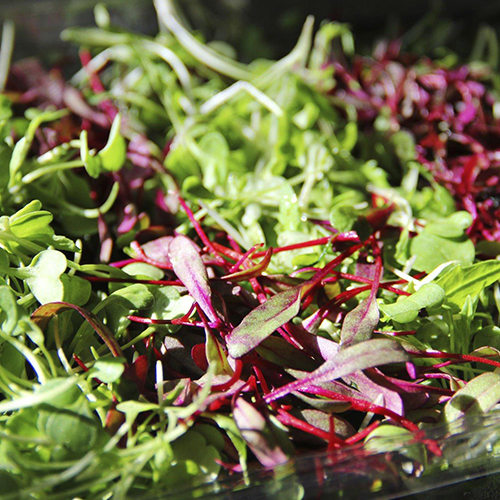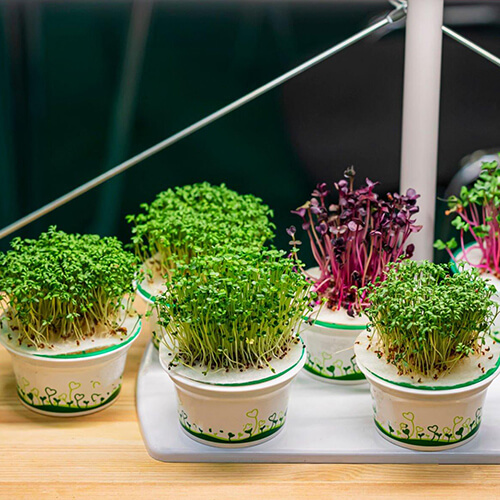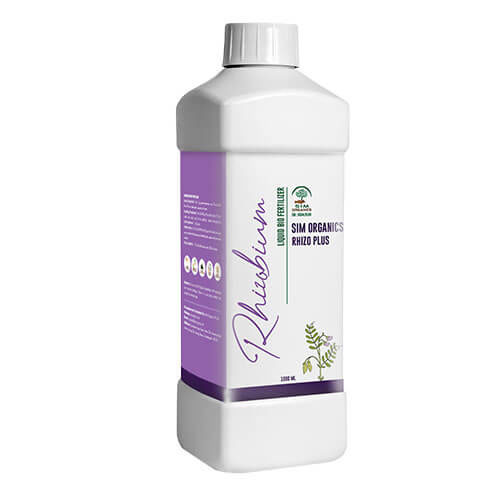
Introduction:
Microgreens have gained widespread recognition for their exceptional nutritional value and culinary versatility. However, determining the ideal serving size and daily consumption of microgreens remains a common question among health-conscious individuals. In this comprehensive guide, we will delve into the intricacies of microgreen consumption, exploring recommended serving sizes, nutritional benefits, health considerations, and practical tips for incorporating microgreens into your daily meals. By the end of this article, you will have a clear understanding of how to maximize the benefits of microgreens while enjoying their vibrant flavors and remarkable health advantages.
1. Understanding Serving Size and Consumption Recommendations:
Determining the appropriate serving size of microgreens requires an understanding of various factors, including dietary guidelines and individual nutritional needs. While no standardized serving size exists, research suggests an average serving of approximately 25 grams, slightly exceeding 3/4 of an ounce. However, it is crucial to consider personal preferences, overall diet, and nutritional requirements when determining daily microgreen consumption.
2. Microgreen Nutrition and Health Benefits:
Microgreens offer a concentrated dose of essential nutrients, including minerals and vitamins, making them highly beneficial for overall health and well-being. These miniature versions of leafy greens possess remarkable nutritional profiles, containing significant amounts of iron, potassium, copper, zinc, magnesium, and various vitamins. Compared to their mature counterparts, microgreens pack a more potent nutritional punch. Additionally, their vibrant colors, crunchy textures, and robust flavors make them a delightful addition to any dish.
3. Aligning Consumption with Dietary Recommendations:
To align microgreen consumption with dietary guidelines, it is essential to consider the recommended daily intake of vegetables. Microgreens can effectively contribute to meeting the Recommended Dietary Allowance (RDA) established by authoritative bodies such as the Institute of Medicine. By incorporating microgreens into your meals, you can enhance your vegetable consumption and derive additional health benefits.
4. Exploring Culinary Applications and Flavor Profiles:
One of the key advantages of microgreens is their versatility in culinary applications. These tiny greens can be seamlessly integrated into various dishes, including soups, salads, sandwiches, wraps, and even smoothies. Each microgreen variety offers a distinct flavor profile, ranging from bitter and spicy to sour or mildly sweet. By experimenting with different combinations and incorporating microgreens into your favorite recipes, you can enhance the taste, texture, and visual appeal of your meals.
5. Addressing Health Considerations and Precautions:
While microgreens are generally safe for consumption, there are a few precautions to keep in mind. Certain microgreens, such as buckwheat microgreens and sprouts, may contain compounds like fagopyrin that should be consumed in limited quantities. It is crucial to prioritize variety in your microgreen selection to enjoy a broad spectrum of nutrients. Additionally, like any raw food, microgreens may carry potential risks associated with foodborne illnesses. Thoroughly rinsing microgreens before consuming them raw is essential to minimize any potential hazards.
6. Practical Tips for Incorporating Microgreens:
To incorporate microgreens seamlessly into your daily diet, consider practical tips such as growing your own microgreens, purchasing them from local farmers markets or health food stores, and exploring home delivery services. Growing microgreens at home can be a cost-effective and rewarding way to ensure freshness and enjoy a wider variety of microgreen options. Additionally, creative meal planning, such as spacing microgreens throughout the day and experimenting with different recipes, can enhance the overall consumption experience.
Conclusion:
In conclusion, incorporating microgreens into your daily diet offers a multitude of health benefits while diversifying your culinary experiences. While serving sizes and consumption recommendations vary based on individual needs, focusing on variety, flavor, and alignment with dietary guidelines can guide your microgreen consumption. By prioritizing fresh, well-washed microgreens and exploring diverse culinary applications, you can harness the remarkable nutritional potential of these miniature greens. Embrace the vibrant colors, delightful flavors, and exceptional health advantages that microgreens offer as you embark on a journey towards a healthier and more flavorful lifestyle.
Are you looking for a lifestyle change for good health?
Sim Organics, a pioneer in its own right, is paving the way for nature lovers like you. We offer biofertilizers, organic garden essentials like premium soil mix, and can assist you in designing the perfect garden space to suit your unique needs.
For a consultation, contact us at +91 78801 66671 or email us at contact@simorganics.net.
Our solutions are also ideal for larger farmlands.






